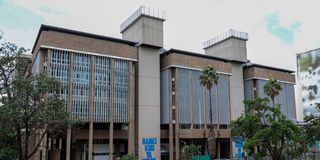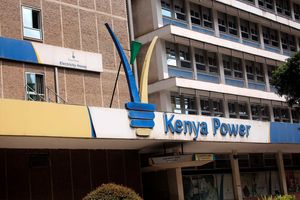
The Central Bank of Kenya (CBK) headquarters in Nairobi. Data from CBK shows lending margins have expanded since the start of the fall of domestic interest rates in August last year.
Commercial banks have widened their lending margins by slashing returns paid to depositors faster than the cost of loans to preserve profits for the industry.
Bank lending margins, also known as interest rate spreads, are the difference between the interest rate a bank charges on loans and the interest rate it pays on deposits or other liabilities. These margins are a crucial indicator of a bank’s profitability and reflect various factors, including credit risk, operating costs, and market conditions.
The lending margins are determined by subtracting the average deposit rate return paid to savers in fixed deposit accounts from the mean borrowing cost.
Data from the Central Bank of Kenya (CBK) shows lending margins have expanded since the start of the fall of domestic interest rates in August last year as returns on bank fixed deposit accounts fall faster than the average lending rate.
The lending margin in February, for instance, rose to 6.65 per cent from a lower 6.59 per cent and 6.44 per cent in January and December, respectively.
Deposit rates
Deposit rates have fallen faster than lending costs, declining to 9.76 per cent in February from 11.14 per cent in August last year. The average lending has meanwhile moved to 16.41 per cent from 16.84 per cent in the same period as banks fault differences in the risk-based loan pricing formula for the sticky borrowing costs.
Melody Ndanu, a senior research associate at Standard Investment Bank (SIB), says deposit rates have fallen faster as the returns on the savings accounts are usually more sensitive to market rates than lending costs.
“Deposit rates tend to be more directly tied to short-term market rates/T-bill rates and the CBR, both of which have been on a downward trend over the last few months,” she said.

Central Bank of Kenya Governor Kamau Thugge at his office in Nairobi on June 21, 2024.
“Further, banks are replacing expensive fixed deposits with cheaper ones as the older ones mature. The Central Bank’s reduction of the cash reserve ratio from 4.25 per cent to 3.25 per cent, has also freed up liquidity thereby reducing banks’ reliance on expensive deposits. Notably, deposits do not have risk premiums as is the case with lending rates and they therefore tend to adjust quicker.”
Bank CEOs have revealed talks with the CBK to review the risk-based loan pricing framework to cut sticky borrowing costs for the benefit of clients.
The executives said each lender has a different benchmark from which loan interest rates are set, resulting in a minimal adjustment to borrowing costs across the industry.
Borrowing costs
The review to be spearheaded by the apex bank is widely expected to set a uniform benchmark interest rate for all banks from which each lender will develop its borrowing costs framework after factoring in differences such as the cost of funds and customers’ risk profiles.
The faster decline in deposit rates than borrowing costs is expected to preserve bank lending margins even as the latitude is seen declining as rates fall further in 2025.
“The trim in deposit rates may offer temporary reprieve to lenders’ net interest margins, though margins may compress as lending rates gradually decline in 2025,” added Ms Ndanu.
Domestic interest rates have been on the decline since August last year when the CBK began the rate-cutting cycle, moving its benchmark from 13 percent to 10.75 percent currently.
Other rates including returns on government securities and interbank lending have declined in tandem with the central bank rate.












